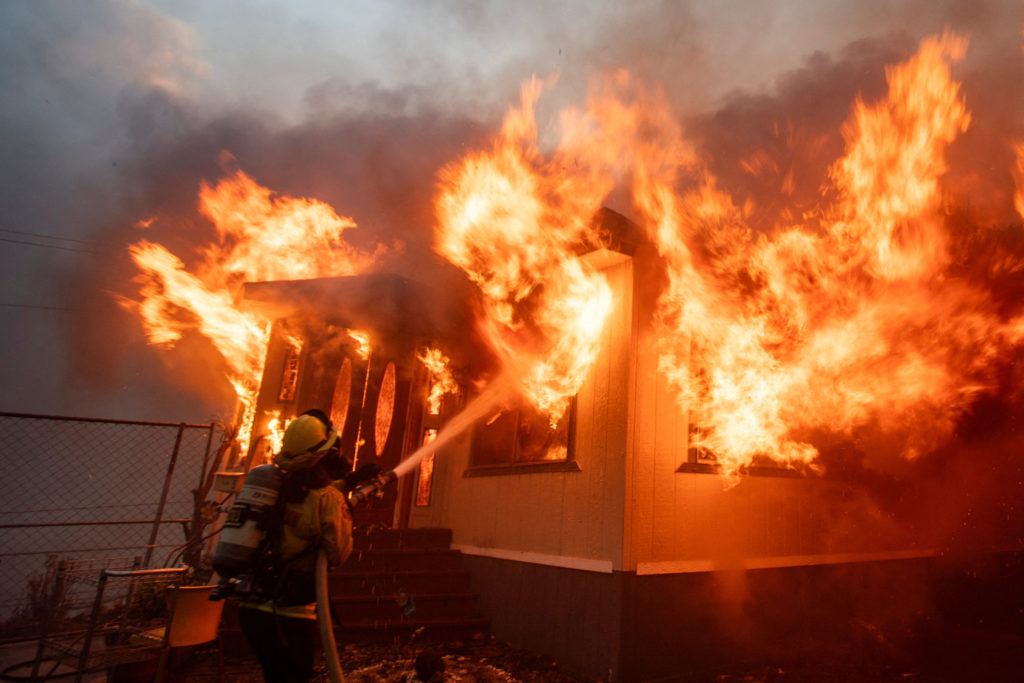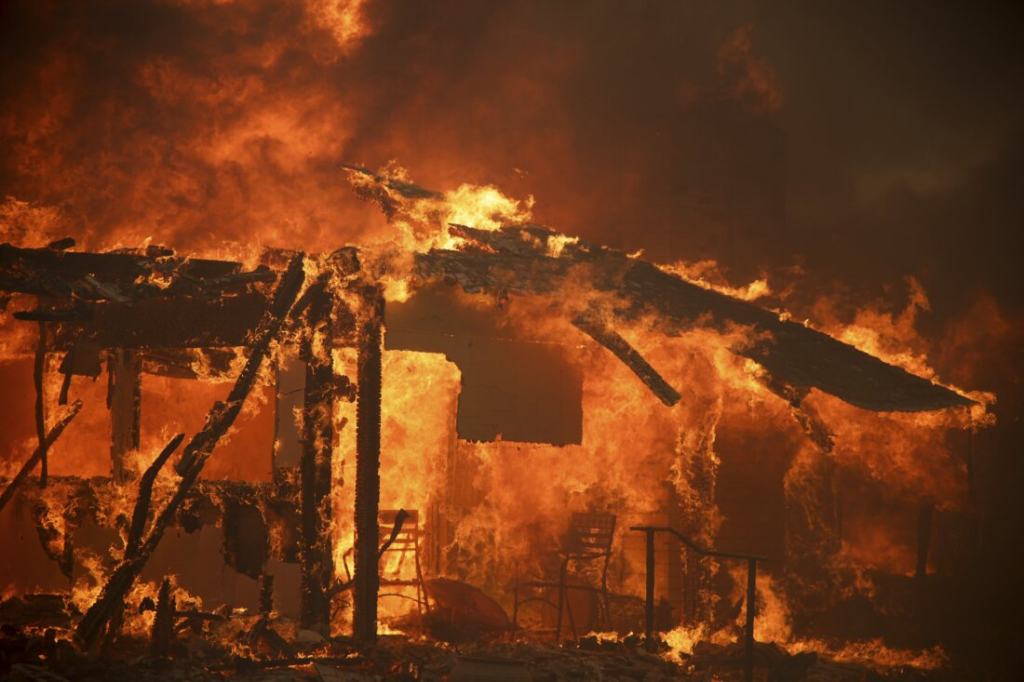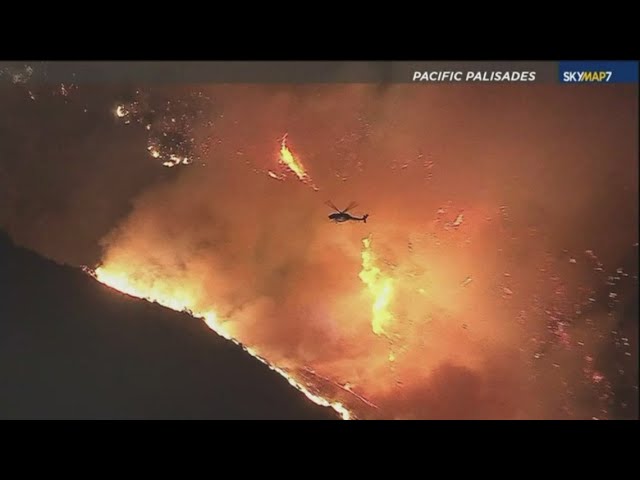California wildfires: What we know about L.A. fire evacuations, maps, what caused it, who is affected and more
Fueled by powerful winds and dry conditions, a series of ferocious wildfires erupted Tuesday and roared across the Los Angeles area, destroying hundreds of homes and killing at least 10 people.
A Los Angeles County fire official said an untold number of significant injuries were linked to two of the fires, and a city official in Los Angeles described Tuesday night as “one of the most devastating and terrifying” that she had seen in her corner of the city.
California’s wildfires
The largest of the fires, the Palisades Fire, has a perimeter of more than 31.2 square miles.
Where are the fires?
- The Palisades Fire erupted Tuesday morning in Pacific Palisades, a Los Angeles County neighborhood east of Malibu, as a brush fire. The blaze had grown to 19,978 acres by Thursday evening, according to the California Department of Forestry and Fire Protection, known as Cal Fire. It was 6% contained.
- The Eaton Fire ignited Tuesday night near a canyon in the sprawling national forest lands north of downtown Los Angeles and had exploded to 13,690 acres by Thursday, according to Cal Fire. It was 0% contained. Los Angeles County Fire Chief Anthony Marrone said said the blaze could damage or destroy up to 5,000 structures.
- The Hurst Fire started Tuesday night in Sylmar, a suburban neighborhood north of San Fernando, as a brush fire and quickly grew to 500 acres, Los Angeles Fire Chief Kristen Crowley said. By Thursday night it had expanded to 771 acres and was 37% contained, according to Cal Fire.
- The Lidia Fire broke out near the community of Acton in a region between the Sierra Pelona and San Gabriel mountains Wednesday afternoon. By Thursday night, it was 394 acres with 75% containment, according to Cal Fire.
- The Kenneth Fire started burning Thursday evening in the Woodland Hills area of Los Angeles, near the Calabasas neighborhood, according to the Los Angeles Fire Department. It covered 960 acres and was 0% contained Thursday night, but officials said forward progress of the fire has been stopped.
- The Sunset Fire sparked in the Hollywood Hills of Los Angeles near Runyon Canyon shortly before 6 p.m. Wednesday, prompting mandatory evacuations. By Wednesday evening it stretched 60 acres, according to the Los Angeles Fire Department. The blaze was 100% contained as of Thursday afternoon, the city announced.
How many people are affected?
Nearly 180,000 people were under evacuation orders due to the Palisades, Eaton, Hurst and Lidia fires in Los Angeles County, Los Angeles County Sheriff Robert Luna said Thursday.
Another 200,000 residents are under evacuation warnings.
More than 100,000 people have been evacuated, Pasadena Mayor Victor Gordo told reporters Wednesday in discussing the Eaton Fire, and 100,000 have been told they may need to evacuate because they live in a danger zone.
Roughly 37,000 people in the path of the Palisades Fire were ordered to leave their homes in the cities of Calabasas, Malibu and Los Angeles, law enforcement and fire officials said.
More than 3,000 people in the Sylmar area were also under emergency evacuation orders, Crowley said.
Have there been deaths and injuries?
As of Thursday night, at least 10 people had died in the fires, according to the Los Angeles County medical examiner’s office.
The office said it could take weeks to confirm the identities of those killed.
Officials said earlier Thursday that four people had died in the Eaton Fire and two in the Palisades Fire. It was not immediately clear whether they were included in the 10 from the medical examiner’s office.
Officials are just beginning to access areas for welfare checks and missing person reports, and they warned that the death toll could grow.
There have been significant injuries in the Eaton Fire, according to Marrone.

Marrone said a significant number of people who did not heed evacuation orders have been injured in the Palisades Fire.
How much damage have the fires done?
Thousands of structures, which include homes, commercial buildings and vehicles, have been damaged or destroyed.
An aerial survey shows an estimated 5,316 structures destroyed in the Palisades Fire, Cal Fire said Thursday, and Marrone said around 4,000 to 5,000 structures could be damaged or destroyed in the Eaton Fire.
Video from NBC Los Angeles showed several businesses in a busy commercial area in Altadena in flames, and the Pasadena Jewish Temple and Center burned overnight, the station reported.
Video from Malibu showed beachfront homes reduced to rubble.
“There is a lot of damage out there,” Luna told reporters.
The Palisades Fire is one of the most destructive in Los Angeles history, Crowley said.
The insured losses from this week’s fires may exceed $20 billion, and total economic losses could reach $50 billion, according to estimates published by JPMorgan on Thursday.
Those losses would far exceed the $12.5 billion in insured damages from the 2018 Camp Fire, which until now was the costliest blaze in the country’s history, according to data from Aon.
What led to the fires?
The combination of drought-like conditions — Southern California has had less than 10% of average rainfall since Oct. 1 — and powerful offshore winds that hit the region Tuesday prompted fire weather that was, in the words of the National Weather Service, “about as bad as it gets.”
The agency issued a red flag warning — indicating an increased risk for fire danger — to 19 million people. Wind gusts topping 70 mph were recorded at several locations across the region.

Swain pointed to the weather whiplash California has experienced in recent years — lurching between drought and heavy rainfall — and said such swings are a key element of the fire weather gripping the region.
“It’s not just that drier conditions are perpetually more likely in a warming climate,” he said, according Inside Climate News. “It’s that this oscillation back and forth between states is something that is particularly consequential for wildfire risk in Southern California.”
When will the fire weather end?
Red flag warnings remain in effect across parts of Southern California through Friday.
Winds are expected to increase across the region Thursday night, according to the Los Angeles office of the National Weather Service.
Marrone warned residents Wednesday that they remain in danger.
“Please prioritize your safety, as well as the well-being of those around you, as we come together to continue to get through this widespread disaster,” he said.
At last year’s Consumer Electronics Show, Honda showed off two futuristic concept cars, the wedge-tastic 0 Saloon and the Space Hub van with a lounge-like interior. While the radical Saloon morphs into a prototype and moves closer to production at CES 2025, the Space Hub has been kicked off stage to make room for the Honda 0 SUV prototype, a much more conventional EV aimed at the crossover-crazy masses. The 0 SUV will evolve into a production model and lead the charge for Honda’s next-generation 0 Series EVs when manufacturing at the company’s new EV Hub in Ohio starts in the first half of 2026.
Designed and engineered in-house, the 0 SUV and 0 Saloon represent a reset for Honda, which has lagged behind the industry in delivering long-range EVs. The new models play catchup on the software front as well, incorporating a new Honda-developed operating system running on a centralized electrical/electronic architecture that unlocks new features.
While exact dimensions haven’t been divulged, Honda describes the 0 prototype as a midsize SUV. In person it appears a little larger than a (compact) CR-V and slightly smaller than a (midsize) Passport, which means it could compete with the GM-built Honda Prologue EV if the two vehicles end up sharing the showroom floor. The 0 distinguishes itself, though, with strong upright proportions that give it a more traditional SUV appearance compared to the wagon-like shape that’s common among electric crossovers.
Inside the 0 prototype offers seating for five and a spacious cargo area that includes two enclosed cubbies behind the thick D-pillars. The cockpit feels modern and upscale thanks in large part to pillar-to-pillar screens running across the dashboard. Three large displays serving as the instrument cluster, infotainment, and passenger screen are flanked by two small monitors for the camera mirrors. Don’t be surprised, though, if the production model sprouts conventional mirrors to meet U.S. regulations.
The driver pilots the 0 SUV with a yoke-style steering wheel and a steer-by-wire system similar to what’s used by the Tesla Cybertruck. With no physical connection to the front tires, the yoke in the prototype automatically rotates 180 degrees when the vehicle is off, providing more clearance for entering and exiting the vehicle.
Honda says the 0 Series will be capable of Level 3 eyes-off-the-road automated driving, which means a driver could watch a movie or join a video conference but would need to remain awake and alert to take control if the vehicle encounters a situation it can’t handle. That said, during a prototype drive last October, we were told that Level 3 capability won’t be available in the U.S. at launch and executives couldn’t shed any additional light on timing at CES 2025.
Whenever eyes-off driver assistance does arrive, expect a cautious rollout. Honda says the system will initially work as a highway traffic-jam assistant at low speeds on certain limited-access roads and that additional capability will be unlocked in time via over-the-air updates.



